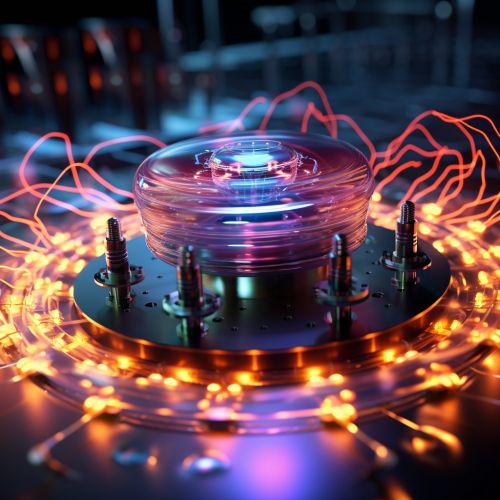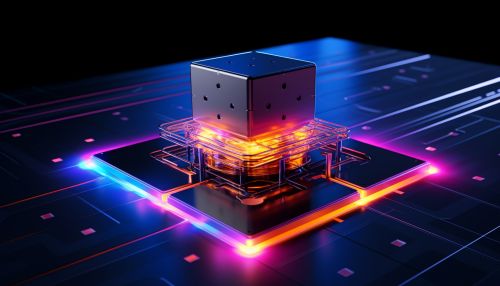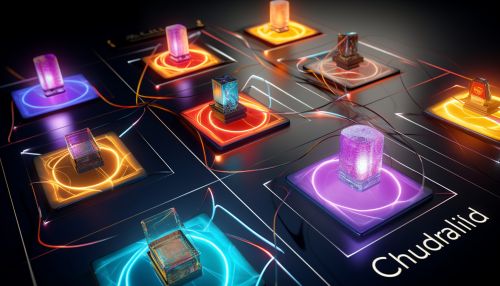Charge Qubit
Introduction
A charge qubit, also known as a Cooper pair box, is a type of superconducting qubit that utilizes the charge of Cooper pairs to carry out quantum computations. The charge qubit is a fundamental component in the field of quantum computing, providing a basis for the construction of quantum circuits and systems.


Concept and Design
The charge qubit is a microscopic quantum circuit that behaves like an artificial atom. It consists of a small superconducting island connected to a reservoir of Cooper pairs via a Josephson Junction. The charge state of the island, which is determined by the number of Cooper pairs it contains, forms the basis of the qubit's quantum state.
The charge qubit operates under the principles of quantum mechanics, particularly the phenomena of superposition and entanglement. These principles allow the charge qubit to exist in multiple states simultaneously, enabling the parallel processing capabilities that are characteristic of quantum computing.


Operation and Function
The operation of a charge qubit is based on the manipulation of the charge state of the superconducting island. This is achieved through the application of a voltage bias across the Josephson junction, which induces a flow of Cooper pairs between the island and the reservoir. The resulting change in the charge state of the island is used to encode and manipulate quantum information.
The charge qubit can be initialized, manipulated, and read out using microwave pulses. The frequency of these pulses corresponds to the energy difference between the two charge states of the qubit, allowing precise control over the qubit's state.


Advantages and Limitations
Charge qubits offer several advantages in quantum computing. They are relatively simple to fabricate and integrate into larger quantum circuits, and they can be controlled with high precision. Furthermore, charge qubits exhibit long coherence times, which is crucial for maintaining quantum information over extended periods.
However, charge qubits also have some limitations. They are highly sensitive to charge noise, which can introduce errors into quantum computations. Additionally, the operation of charge qubits requires extremely low temperatures, which can be challenging to maintain in practical applications.


Applications
Charge qubits are primarily used in quantum computing, where they serve as the basic building blocks of quantum circuits. They are also used in quantum information processing, quantum communication, and quantum simulation. In addition, charge qubits have potential applications in quantum metrology, where they can be used to measure physical quantities with unprecedented precision.


Future Directions
Research in charge qubits is ongoing, with efforts focused on improving their performance and scalability. This includes developing techniques to reduce charge noise, enhancing the coherence time of charge qubits, and integrating charge qubits into larger quantum systems. The continued advancement of charge qubit technology is expected to play a crucial role in the realization of practical quantum computing.


See Also
- Superconducting quantum computing
- Quantum computing
- Josephson junction
- Quantum entanglement
- Quantum superposition
References
1. Nakamura, Y., Pashkin, Y. A., & Tsai, J. S. (1999). Coherent control of macroscopic quantum states in a single-Cooper-pair box. Nature, 398(6730), 786-788. 2. Vion, D., Aassime, A., Cottet, A., Joyez, P., Pothier, H., Urbina, C., ... & Esteve, D. (2002). Manipulating the quantum state of an electrical circuit. Science, 296(5574), 886-889. 3. Koch, J., Yu, T. M., Gambetta, J., Houck, A. A., Schuster, D. I., Majer, J., ... & Schoelkopf, R. J. (2007). Charge-insensitive qubit design derived from the Cooper pair box. Physical Review A, 76(4), 042319.
